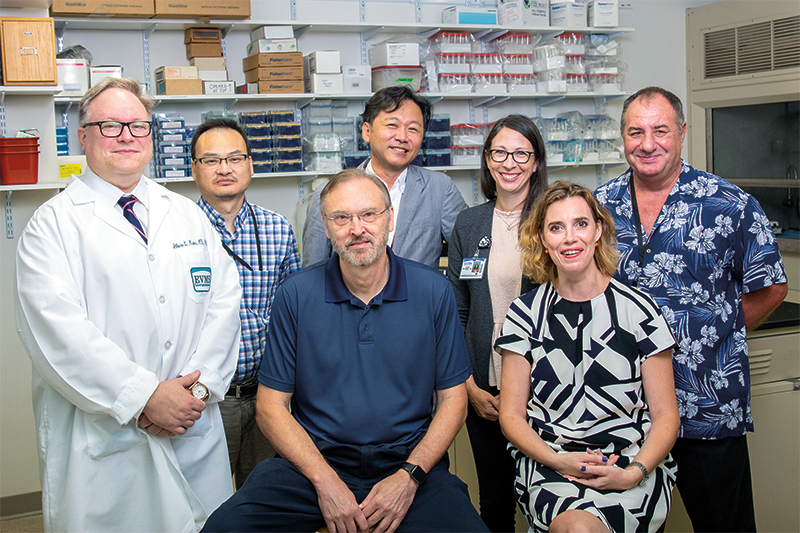New research center targets mind-body connection in disease

When a handful of EVMS basic scientists decided to combine their expertise and launch a new research center, their focus met a pressing need.
“Nowhere is the need for a multidisciplinary approach more apparent than in the growing recognition that interactions between the central nervous system and peripheral organ systems play significant roles in maintaining overall health,” says Larry Sanford, PhD, Professor of Pathology and Anatomy and Founding Director of the EVMS Center for Integrative Neuroscience and Inflammatory Diseases (CINID).
“Nowhere is the need for a multidisciplinary approach more apparent than in the growing recognition that interactions between the central nervous system and peripheral organ systems play significant roles in maintaining overall health,”
Larry Sanford, PhD, Professor of Pathology and Anatomy and Founding Director of the EVMS Center for Integrative Neuroscience and Inflammatory Diseases (CINID)
“When people have a disease, they don’t just have a problem going wrong with one system. It is multiple systems,” he says. “When things go wrong, it impactseverything — the brain and the body.”
This complex communication between the body and the brain is challenging to understand but filled with potential. A single research advance could yield new treatments for a range of diseases where inflammation plays a central role, including Alzheimer’s Disease, atherosclerosis, diabetes and cancer.
The new center builds on existing strengths in the faculty — for instance, pairing neuroscientists with researchers knowledgeable about how organ systems work and interact. The team also includes physicians and an engineering professor from Norfolk State University.
While the researchers represent disparate specialties, the “neuro-immune interface” unites the scientific disciplines.
“In general, we are focusing on the immune system and inflammation in the nervous system because this interaction has a role in virtually everything you want to talk about,” he says. “The critical thing is to find some underlying mechanism that is involved in different disease entities.”
Founded just prior to the pandemic, CINID encompasses 10 researchers who have formed multidisciplinary teams to tackle a dozen focal areas.
The impetus for the new center was the realization that more research funding opportunities require a multidisciplinary team approach.
“Being competitive in the current research environment often requires a wide range of skills and expertise that is found only in multidisciplinary teams,” he says.
The team approach works.
One of the intangible benefits of the new center has been the broad exchange of ideas during monthly meetings and in small gatherings.
“One of the more enjoyable parts of this is the intellectual interplay,” Dr. Sanford says. “People see connections across research areas and contribute in ways that you wouldn’t have thought that they would.”
Read more magazine stories from issue 14.1 or read stories from past issues.
Subscribe to receive free copies of EVMS Magazine.
Subscribe